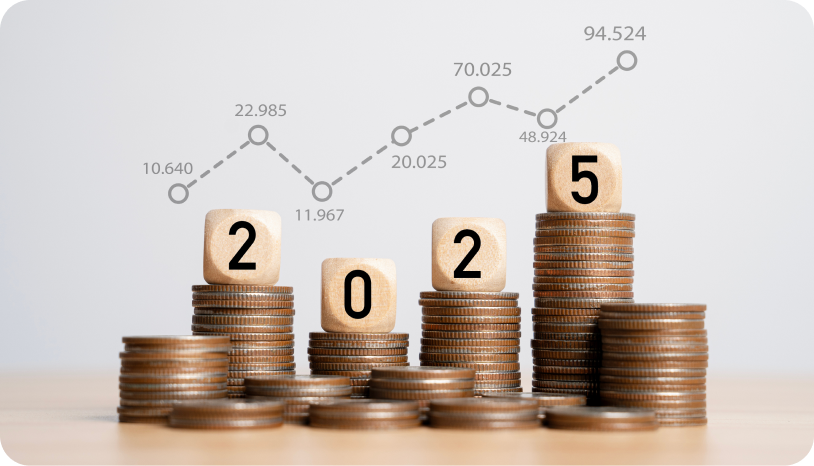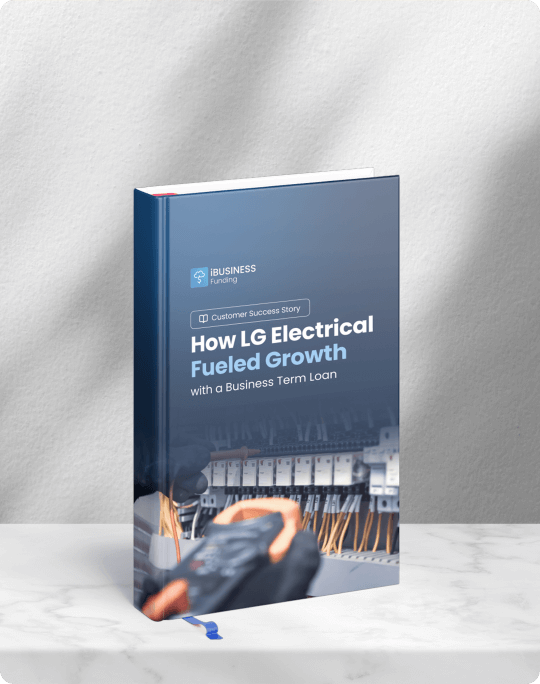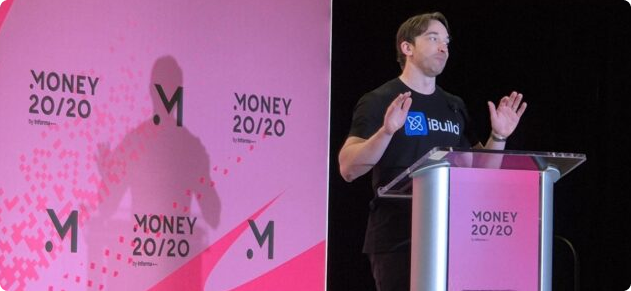
FY2025 Q1 SBA 7(a) Performance: Where We Stand & What’s Ahead
A Look at the SBA Landscape: Q1 FY2025 vs. Q1 FY2024
Now that the SBA’s FY2025 Q1 has closed, we analyzed the lending data and compared it to Q1 of FY2024, giving us a valuable glimpse into the shifting small business landscape and reminding us that it’s not just about the numbers—it’s about the businesses behind them. By tapping into data from LenderAI Insights and the SBA, we shed light on who is borrowing, how much they’re borrowing, and what these trends could mean for the broader economic climate.
Increased Borrowing Activity
One of the first things that stands out is the notable increase in total SBA loan approvals. In Q1 of FY25, the number of gross approvals jumped to 19,995—up from 14,540 in Q1 of FY24. That’s a 37% increase in the number of loans approved. This suggests a growing confidence in small businesses, or at the very least, a greater willingness to borrow to fund operations, expansion, or recovery efforts.
The total sum of gross approvals also experienced a significant jump, from just over $6.3 billion in Q1 of FY24 to $8.7 billion in Q1 of FY25 for a 38% increase. The fact that the dollar amount and the number of loans grew in tandem is a good indication that businesses are not only borrowing more frequently but also taking on larger loans as they expand or strengthen their operations.

SBA Loan Trends: Top 3 Industries
In Q1 of FY2025, three industries led the way in SBA loans, reflecting a strong demand for funding to support ongoing expansion and recovery.
- Full-Service Restaurants: Approved loans grew by 24.7%, from 729 to 909, while total loan volume rose 13%, from $355.6M to $401.7M. This indicates a continued push for capital, which is often used for expansion and operational efforts.
- Limited-Service Restaurants: This sector saw the largest growth, with loans increasing by 40.5%, from 450 to 632. Total loan volume surged 62.7%, from $176.4M to $286.9M. This jump signals strong demand in the fast-casual and quick-service dining space.
- Residential Remodelers: Loans increased by 24.8%, from 359 to 448, with total loan volume rising 52.7%, from $56M to $85.6M. The home renovation boom continues to drive borrowing in this industry.
Overall, these three industries are seeing significant growth in SBA loan approvals, reflecting a strong demand for capital to fuel business development and capitalize on market opportunities.

Who’s Borrowing?
The composition of SBA borrowers has shifted significantly, with corporations now making up a larger share of approvals. In Q1 of FY2024, 13,744 corporations received loans totaling around $6.1 billion. In Q1 of FY2025, that number grew to 18,859 corporations, with loan approvals reaching over $8.4 billion. This increase suggests that larger small businesses may be looking for more capital to fuel growth, invest in technology, or expand their workforce. Interestingly, the number of individual borrowers has also increased, rising from 652 in FY2024 Q1 to 911 in FY2025 Q1. The total sum of loans approved for individuals grew by about 29%, from $136 million to $175 million. While this is a smaller portion of the total amount, it could indicate a broader willingness among entrepreneurs and sole proprietors to pursue loans in a more competitive and uncertain economic environment. Although partnerships make up a smaller portion of the total, they saw growth in both loan count and total loan value. The number of loans approved for partnerships increased from 144 in Q1 of FY2024 to 212 in Q1 of FY2025, while the total loan value jumped by over 35%, from $77 million to $104 million.

SBA 7(a) Loan Size Trends: Q1 FY 2025 vs. Q1 FY 2024
Loan Growth
The overall increase in loan volume across both loans under $50K and loans under $500K signals a broader trend of rising demand for SBA 7(a) financing. In Q1 of FY2025, the number of loans under $50K grew by 17%, while loans under $500K surged by 40%. This uptick in loan activity suggests that small businesses are increasingly turning to SBA loans to meet their financing needs, possibly driven by continued economic uncertainty and a growing appetite for accessible capital.
Corporations Still Dominate, but Change is in the Air
Corporations remain the largest borrower group for loans under $500K, but their share of funding has slightly shrunk. In Q1 FY 2025, corporations accounted for 90.3% of loans under $50K (down from 91% in FY 2024) and 93.6% of loans under $500K (down from 94%). While corporations continue to make up the vast majority of SBA 7(a) borrowers, the small shifts in their share hint at subtle changes in borrowing patterns.
A Rising Tide for Individuals and Partnerships
The most striking trend is the noticeable increase in loans under $500K to individuals and partnerships. Loans to individuals under $50K grew by 23.5%, and those to partnerships rose 63%. In the larger loan category, loans to individuals increased by 41.7%, while loans to partnerships climbed 62%. This suggests that SBA 7(a) financing is increasingly reaching a broader spectrum of borrowers beyond just corporations, with a particular uptick in self-employed entrepreneurs and small business partnerships.


Job Creation and Economic Impact
Another crucial indicator of this growing borrowing trend is the number of jobs supported. In Q1 of FY2024, SBA loans helped support 143,111 jobs, while in Q1 of FY2025, that number increased to 194,283—a 36% increase. This shows that SBA-backed financing is playing a significant role in job creation, particularly at a time when small businesses are recovering from the pressures of the past few years. It’s clear that larger corporations are not the only ones benefiting from SBA loans—individual borrowers and partnerships are also tapping into this resource to fuel job growth and expansion. The increase in job support is a positive sign for both the stability and growth of the small business sector.

What Does This Indicate?
The surge in loan activity across multiple sectors can be interpreted in a few ways. First, small businesses are responding to a combination of factors, including economic pressures, competition, and a desire to capture new market opportunities. The increase in loan amounts, particularly among corporations and partnerships, signals that businesses are looking for capital to invest in their futures, whether through technology, hiring, or expansion. However, it also suggests a shift in the borrowing landscape. The fact that larger corporations are seeking SBA loans may indicate they’re adapting to a more uncertain economic climate by accessing lower-cost financing options. Individual borrowers taking out more loans could point to an increase in entrepreneurial risk-taking or simply the need for more capital to manage ongoing challenges. The significant rise in jobs supported underscores the importance of SBA loans not just for financing business expansion but for driving economic recovery. With more jobs on the line, there’s an undeniable ripple effect—small businesses aren’t just borrowing money, they’re contributing to broader economic health.
Key Takeaways
- Increased SBA Loan Approvals: SBA loan approvals surged by 37% year-over-year, reaching nearly 20,000 loans and $8.7 billion in total value for Q1 FY2025. This increase signals growing confidence in small businesses and a strong demand for capital to support operations, expansion, and recovery.
- Industry Growth: The foodservice and home improvement sectors, including full-service and limited-service restaurants, and residential remodelers, saw the highest growth in both loan count and volume.
- Shift in Borrower Composition: Corporations now represent a larger share of SBA loans, with a 37% increase in approvals for them. There's also a noticeable rise in individual borrowers, pointing to increased entrepreneurial activity, while partnerships saw a smaller but significant uptick.
- Job Creation Impact: SBA loans supported 36% more jobs in FY2025 Q1 compared to the previous year, underscoring the role of SBA financing in economic recovery and job creation.
- Rising Demand for Loans Under $500K: Small businesses are embracing SBA loans under $500K, and the increase in loans to individuals and partnerships suggests a broadening of access to funding across the business spectrum. As the year progresses, this trend may continue to evolve, highlighting the growing role of SBA 7(a) loans in supporting diverse entrepreneurial needs.
For Lenders
- Monitor Sector-Specific Demand: The data highlights strong loan activity in specific industries like restaurants and residential remodeling. Lenders should keep an eye on these sectors for potential opportunities and risk assessments.
- Corporations and Partnerships Are Borrowing More: Larger corporations are increasingly turning to SBA loans, possibly due to economic uncertainty or the need for lower-cost capital. Lenders should consider adjusting their approach to attract these types of borrowers, offering customized loan products tailored to corporate growth and expansion.
- Entrepreneurial Growth: The rise in loans to individual borrowers suggests a shift toward entrepreneurial risk-taking. Lenders may want to adapt their offerings to better serve this segment, perhaps by offering more flexible loan structures or providing additional support for new businesses.
- Focus on Job Creation: SBA-backed loans are playing a significant role in job creation. As lenders, aligning with this mission could not only help drive positive economic outcomes but also strengthen relationships with businesses that prioritize growth and community impact.
Looking Ahead
As we continue into FY 2025, the upward trend in SBA loan approvals is likely to persist as small businesses continue to play a vital role in the recovery and evolution of the U.S. economy.
The key takeaway here is that small businesses are actively seeking out the capital they need to adapt, evolve, and scale. Whether its corporations gearing up for expansion or individuals leveraging loans to stabilize and innovate, the landscape of SBA lending in 2025 is more dynamic and diverse than ever.
As we move through the year, it will be interesting to track how this trend continues to unfold and what it means for the future of small business growth in America. For now, the data shows that optimism and a sense of opportunity are helping small businesses not just stay afloat but make substantial strides forward.
Want to leverage lending data for your organization? Register for your free LenderAI Insights account today and gain immediate access to track trends, borrower behaviors, and industry-specific opportunities. Stay ahead of the curve and make data-driven decisions!











.png)
.png)
.png)



.svg)